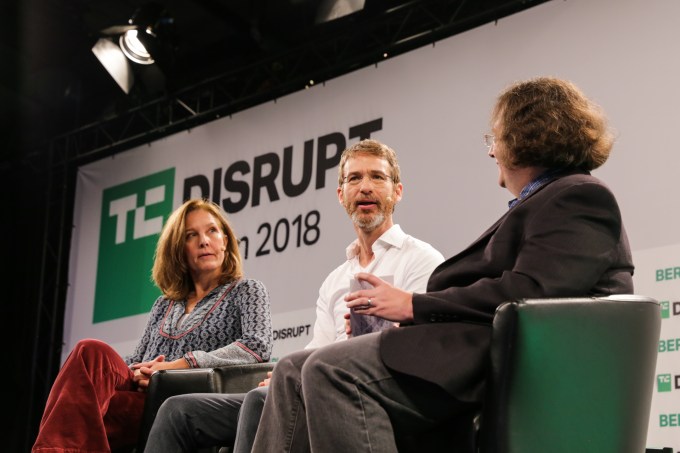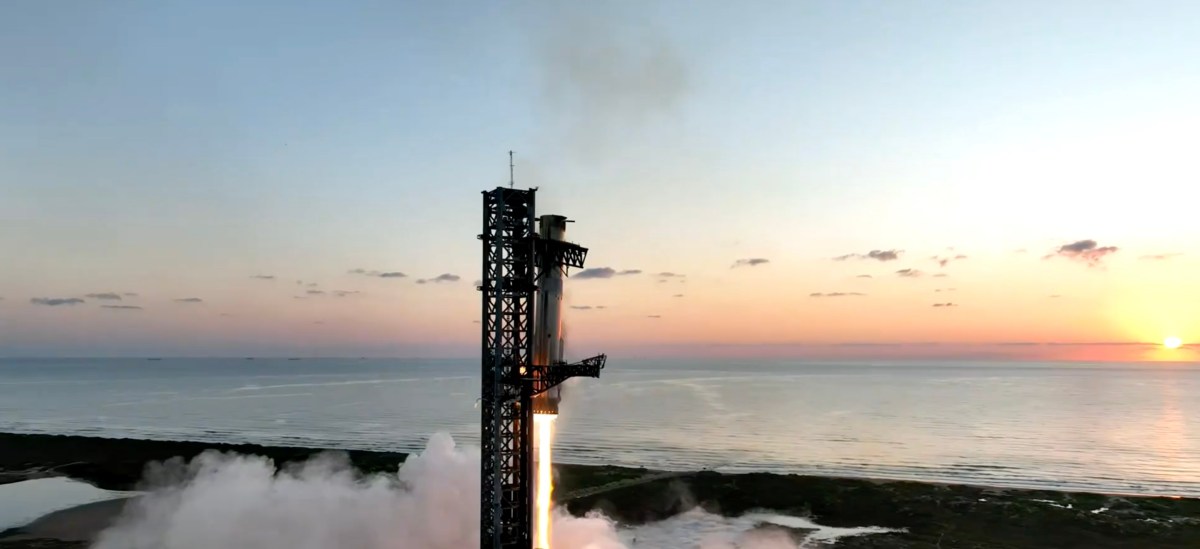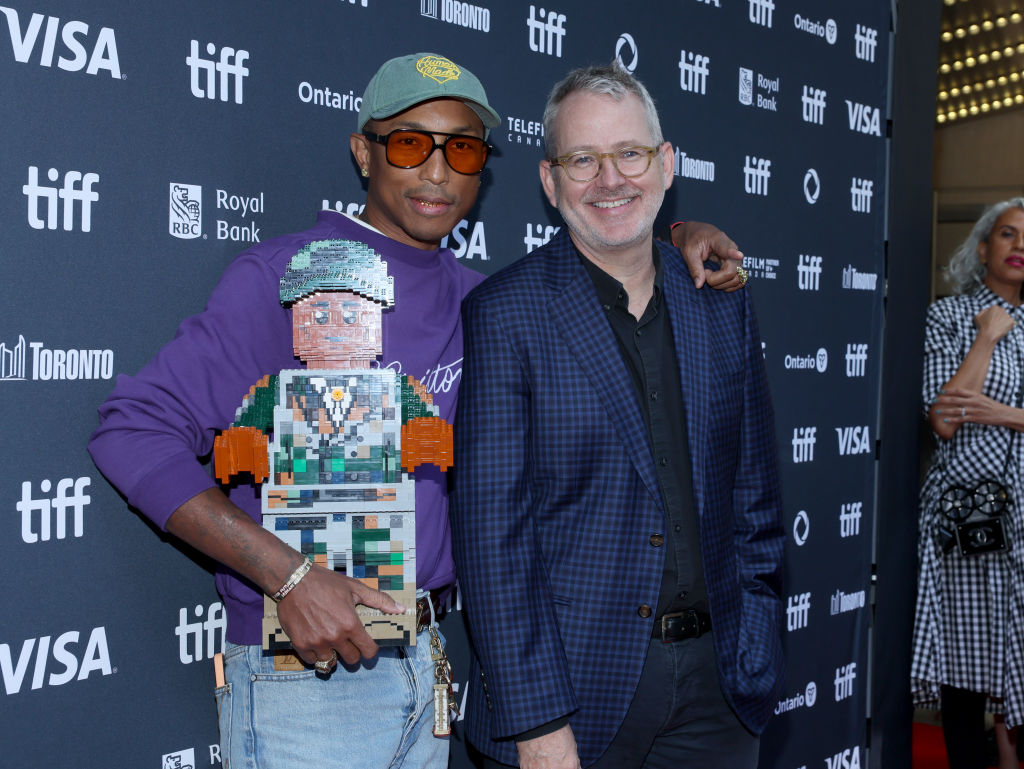Tech
Babbel co-founder Markus Witte will once again run the company, replacing CEO Arne Schepker

Arne Schepker, the CEO of the popular Berlin-based language learning platform Babbel, is stepping down, and the company’s co-founder and former CEO Markus Witte is stepping back in to lead the company “into a new phase while searching for Arne’s successor with patience,” the company said. This new phase, unsurprisingly, will involve AI.
Witte will not claim the CEO role for the time being, but instead will be executive chairman and managing director.
After almost exactly five years as the sole CEO — and a few months prior as co-CEO together with Witte, who had held the position in the preceding years — Schepker decided not to renew his contract, he told me. Witte will continue in his role as Executive Chairman and will now also take on the Managing Director position.
“I just couldn’t get to a strong enough ‘yes’ and as a CEO, I don’t feel you can do the job with just 100 percent commitment. It needs to be 180 percent, no matter what. And I couldn’t get there, and I didn’t feel that was enough and right and sufficient for the team, for the company, for our shareholders, so I decided not to extend my contract,” he said.

Schepker joined Babbel as its CMO in 2015. At this point, he said, he’s seeing repeating patterns. He couldn’t quite get excited about another round of creating an annual budget and setting OKRs for the team.
“That’s reason number one. Reason number two is that the timing actually is quite good, because we are, anyways, moving into a new phase as a company,” he said. In addition, he also wants to take more time to travel with his family for at least the next year. “Don’t expect anything on my LinkedIn feed until next winter.”
He also noted that he was happy to be able to do our interview together with Witte. “I think a founder who built the company, who built our first products, who built our culture, who built all the foundations that I was able to work off of, and someone who I deeply trust and have a strong alignment with is a fantastic transition,” he said.
During Schepker’s tenure, Babbel’s revenue grew 6x to around $300 million, with a team of almost 1,000 people.
“We’ve achieved what we wanted to achieve,” he said. But what he’s perhaps most proud of is that the company was able to help students during the pandemic and now Ukrainian refugees with their language learning needs for free.
“There’s no monetary value to that. I can’t even prove you an ROI on it. Still to the day, I cannot, but not a conversation goes by where that’s not brought up, whether that’s a press interview, a candidate interview, or just a dinner with friends.”
So what does the next phase of Babbel look like? Witte told me that he believes as technology is changing, AI can now play a more direct role in helping people learn a new language. Babbel already used machine learning under the hood, but it never billed itself as an “AI company.” Instead, it always put an emphasis on the teachers and experts it worked with to create its courses (in no small part to differentiate from competitors like Duolingo).

With the technology moving so quickly, though, Witte also acknowledged that it’s hard even to think about strategy beyond the next half year.
“We’re in a phase where even people building large language models don’t know what the next generation will be able to do,” he said. “And so I think even companies of our size, so not very early-stage startups, need to be more nimble than they ever have been.”
And at this stage, he believes, having a founder back at the helm of the company may actually be an advantage because it’s easier for him, as a founder (and one of the largest shareholders in the company), to make risky changes to the company’s strategy.
In Witte’s view, we’ve now reached a point where the combination of large language models, which tend to excel at language-related tasks, and Babbel’s deep expertise in language learning, will change how the company goes about teaching its customers. Before, the technology simply wasn’t there. “We have come to the point where what we said before is not true anymore,” he said.
Schepker also noted that at its core, Babbel’s mission and the problem it tries to solve is a human one.
“The problem to solve is still human language learning. You still want to speak to someone in another language. You want to have a conversation with a loved one, a family member, whatever it is,” he said. “There’s a real opportunity here for Babbel to use all the didactic knowledge that we have, to use all the data that we have, to use this new technology and put that together and create a real, personalized and powerful language learning journey that finally gets us to crack the problem for real. Because we’ve made language learning easier, but it’s still work.”
In addition to navigating the change brought upon by AI, Witte also noted that he wants to focus on creating more “moments of delight,” for the company’s employees and users. “These things that bring a smile to your face, on all the different levels, that’s what I’m driving towards,” he told me. “That’s kind of my mental model in the moment. I don’t think we have to excel in everything. I don’t think we have to polish everything, but I want these moments of delight on all dimensions, on all levels.”
Tech
Apple might release a $2,000 Vision headset next year

Apple’s Vision Pro hasn’t exactly reshaped the market, but the company isn’t giving up on headsets that combine the digital and real worlds.
A new report from Bloomberg’s Mark Gurman says that Apple’s next big mixed reality release could come as early as next year, with the launch of a Vision headset costing around $2,000 — not exactly cheap, but more affordable than the $3,500 Vision Pro. To achieve this price, Apple would use cheaper materials and a less powerful processor, and it would not include the EyeSight feature that shows a user’s eyes outside the headset.
Next up would be a second-generation Vision Pro in 2026, and then potentially smart glasses (akin to Meta’s Ray-Bans) and AirPods with cameras in 2027.
The same report offers an update on Apple’s smart home strategy. The company hasn’t had much success here, either, but there are reportedly plans for an “an affordable iPad-like screen” that could be placed around the house to watch TV, make FaceTime calls, and use apps. This would be followed by a tabletop device with a robot arm, which could cost around $1,000.
Tech
SpaceX successfully catches returning Starship booster

For the first time, SpaceX not only launched its mammoth Starship, but also returned the booster to the launch site and to caught it with a pair of oversized “chopsticks.”
This test flight — the fifth in the Starship development program — took place Sunday morning at the company’s Starbase site in southeast Texas. The nearly 400-foot-tall Starship is at the centerpiece of SpaceX’s stated ambition to make life multi-planetary, but more immediately NASA’s ambitious Artemis campaign to return humans to the surface of the moon.
SpaceX envisions rapid reuse of the entire Starship vehicle, which includes an upper stage (also called Starship) and a Super Heavy booster — but that means proving out the capability to recover both stages and quickly refurbish them for future flights.
So it makes sense that the primary objectives for this fifth flight test were two-fold: attempting the first-ever “catch” of the Super Heavy booster at the launch site and an on-target Starship reentry and splashdown in the Indian Ocean.
The latter goal had already been achieved: SpaceX nailed a controlled reentry and splashdown of the Starship upper stage during the last test mission in June. But the booster catch, as the company put it in a blog post, would be “singularly novel” in the history of rocketry.
The closest analogue is the now-routine Falcon 9 booster landings on autonomous barges and terrestrial landing zones. In today’s launch, the booster slowed to a hover and gently positioned itself inside the zone of two “chopstick” arms attached to the launch tower. Those arms then closed around the booster and hold it up after its engines stop firing.
You can see the catch at around 40 minutes into SpaceX’s video of the test. Following the booster detachment and catch, Starship continued to ascend into orbit before splashing in the Indian Ocean and exploding (SpaceX had not planned to recover the spacecraft).
SpaceX noted in an update posted on its website that “thousands” of criteria showing healthy systems across the vehicle and pad had to be met for the catch attempt to occur. This test also took place a little sooner than expected: the Federal Aviation Administration had previously said that it did not anticipate issuing a modified launch license for this test before late November.
That timeline gave much umbrage to SpaceX, leading the company to repeatedly call out what it characterized as the regulator’s inefficiency. But the FAA announced on Saturday that it had approved the launch.
“The FAA determined SpaceX met all safety, environmental and other licensing requirements for the suborbital test flight,” the regulator said in a statement. Notably, the authorization also includes approval for the next test flight, given that “the changes requested by SpaceX for Flight 6 are within the scope of what has been previously analyazed,” the FAA said.
While awaiting this launch license, SpaceX engineers have stayed very busy: in recent months, they have conducted numerous tests on the launch tower, completely replaced the rocket’s entire thermal protection system with newer tiles and a backup ablative layer, and updated the ship’s software for reentry. This week, engineers completed propellant loading tests and testing of the launch pad’s water deluge system, which is meant to protect the pad from the powerful fire of the booster’s 33 Raptor engines.
The company eventually plans on bringing the Starship upper stage back to the landing site too, though we’ll have to wait to see that in future test launches.
“With each flight building on the learnings from the last, testing improvements in hardware and operations across every facet of Starship, we’re on the verge of demonstrating techniques fundamental to Starship’s fully and rapidly reusable design,” the company says. “By continuing to push our hardware in a flight environment, and doing so as safely and frequently as possible, we’ll rapidly bring Starship online and revolutionize humanity’s ability to access space.”
Anthony Ha contributed to this report, which has been updated to reflect the successful test flight.
Tech
Director Morgan Neville is steering clear of generative AI after ‘Roadrunner’ backlash

One of the most attention-grabbing aspects of “Roadrunner,” the Morgan Neville-directed documentary about Anthony Bourdain, was Neville’s use of generative AI to replicate Bourdain’s voice.
Looking back now, Neville told Wired that he saw this as a “fun” way to “keep [Bourdain’s] voice going in the film.” But his approach drew intense criticism — while the synthetic Bourdain only read words that the real Bourdain had actually written, Neville said many viewers assumed, “Oh, they just made [expletive] up.”
“Many people told me that there were other documentary projects that were doing the same thing, that all reacted; they either changed what they were doing or put giant disclaimers over everything,” he said.
Since then, the director has “assiduously avoided” using AI. Even in his new documentary “Piece by Piece,” in which he dramatizes musician Pharrell’s life with Legos (yes, really), Neville was careful to steer clear.
“Carl Sagan in [Piece by Piece] says, ‘Pharrell’ and I was very clear to everybody that we were, with permission of his widow, going to make him say ‘Pharrell’ without using AI,” Neville said. “We actually experimented to construct the word from syllables [he actually said].”





